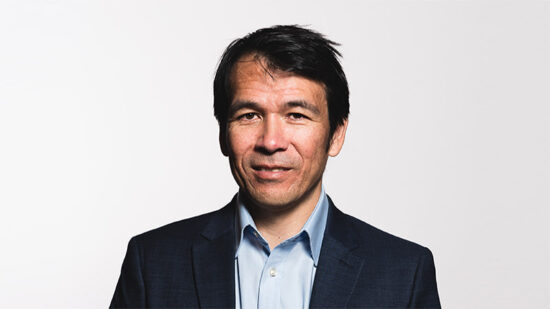Alternatives has become one of the key buzz words of the retail investment and advice space over the last year.
The increased volatility and correlation between traditional asset classes impacted multi-asset portfolios significantly in 2022.
This has resulted in investors searching for additional sources of return and alternatives have become a popular option.
So, is the alternative craze in the multi-asset world set for a long-term future or will it pitter out?
Define objectives
Justin Oliver, chief investment officer at Canaccord Genuity Funds, said: “This partly depends on what you want your alternatives allocation to deliver and whether other assets also offer this potential.
“If we define alternatives as ‘anything which isn’t a long-only equity, fixed interest or cash’, our belief is that too many investors use alternatives as an alternate source of equity beta, particularly in the closed-ended universe. REITs or private equity investment companies are probably the best example.
“That’s not to say that they don’t have a role to play within portfolios, or don’t offer attractive opportunities at certain points of the investment cycle. It’s simply a point that investors need to understand that these types of alternatives aren’t offering anything fundamentally different in terms of their risk/return profile from certain types of equity. The easiest and best way of incorporating equity beta is via equities.
“Investors who haven’t used alternatives previously and who have been able to generate attractive returns without them are unlikely to look at this space now. There is also an argument to be made that a strong investment process which has delivered good returns via way of equity and bond selection may be sufficient; last year a defensive equity position would have outperformed most liquid alternatives except commodities.”
Alex Funk, chief investment officer of Schroder Investment Solutions, added: “The biggest challenge for investors and alternatives is understanding what you want to achieve by investing in alternatives, it shouldn’t just be an allocation where you invest in funds that don’t fit in your traditional allocation framework.
“A critical starting point of including this allocation in portfolios is defining its objective. We believe that alternatives will remain a structural part of multi-asset portfolios, investors should have a strategic allocation to the asset class, but have a very clear objective in what they are looking to achieve.”
Valuable
Adrian Todd, senior research director of Investec Wealth & Investment, said: “2022 showed how valuable genuinely diversifying alternatives exposures can be in multi-asset portfolios as equities and bonds suffered significant weakness.
“2022 also highlighted how important the selection decisions within alternatives can be – those alternatives which were providing beta or bond duration in disguise exacerbated a traditional portfolio’s pain while funds targeting returns genuinely distinct from the equity and bond markets were able to behave in a very defensive manner, some generating significantly positive returns which off-set the weakness suffered across equities and bonds.
“There remain a number of challenges with investing in alternatives for the average retail client such as cost, complexity, liquidity, and management of expectations, but the options and quality of those options have improved materially over the last 10 years or so. A well-considered allocation to Alternatives can have a very positive effect on overall portfolio risk-adjusted returns over time.”
Appropriate
Alternative investments – such as private equity – have largely been the cornerstone of institutional investing and very wealthy private clients.
So, what needs to change for alternatives to be entirely appropriate for retail investors?
Canaccord’s Oliver said it is a tough question given the diversity of alternatives – but in broad terms, “the answer is lower fees and greater transparency”.
He added: “With slightly less run of the mill strategies, it can be difficult for investors to fully understand the risks which are being run. Yes, there are the usual legal regulatory warnings, but will investors understand factors such as discount rates and the impact that this may have on infrastructure related investments? What risks do companies like the Hipgnosis Songs Fund offer; in what environment will it do well and not so well? This isn’t always immediately obvious.
“It’s a central tenet of the industry that higher potential returns is associated with higher risk, but sometimes the actual source of those risks aren’t clearly understandable.”
Schroders’ Funk added: “Alternatives provide an opportunity to bolster diversification in a multi-asset portfolio. It’s important to understand the type of contribution that different alternatives provide and blending these accordingly to help achieve client outcomes. When thinking about alternatives, it remains crucial to think for investing in them in a portfolio context, alongside your traditional asset classes and most importantly in line with your investment objective.
“When you think about constructing an investment solution, to meet specific outcomes, it’s important to think about the range of asset classes available to you and at your disposal. Then understand the risk and return characteristics, but also the rolling correlation of how they interact with each other. It’s never been about the 60/40 portfolio, it’s always been about expected risk and return while optimising for specific client outcomes.”
Investec W&I’s Todd said: “This will depend on the type of alternative investment but for the liquid alternatives space there is a lot of variation across investments in terms of the type and depth of reporting.
“In general, the level of disclosure and transparency should be improved. In addition, more care from the product providers should be taken to adequately manage investor expectations – it’s important for investors to know as much as reasonable possible prior to investment in terms of how an investment is likely to behave in different market scenarios to prevent investors making poor allocation decisions, perhaps more prone to performance-related decision making with alternative investments versus more traditional investments.”








